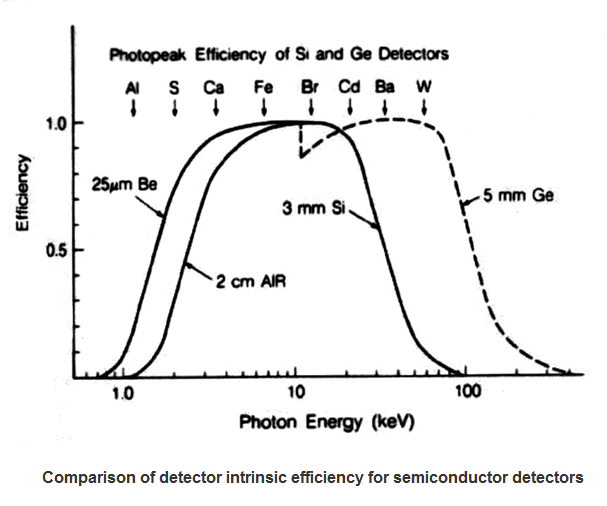4.1 Detector efficiency
The efficiency of a detector is a measure of the probability that an incident photon or particle will be producing a response in the detector. It is usually quoted as the ratio of recorded counts to the original activity. Absolute efficiency εabs is composed by the detector intrinsic efficiency ε (number of recorded events to the number of photons or particles impinging in the detector) and the effective solid angle of detection G (fraction of photons or particles that reach the detector to the total number of radiation emitted by the source).

The detector intrinsic efficiency can vary with the energy of the incident radiation, as illustrated in the figure below. At low energies, efficiency drops due to the attenuation of the radiation in the detector entrance window. At large energies the probability of travelling through the detector volume without producing an interaction increases and the efficiency drops.

The time required to process a detected event varies across the different types of detectors. When the rate of incoming events increases, the detector and the pulse processing electronics need to reject some pulses during some fraction of time. Dead time refers to the total time required for a detector to process the events, and it is usually expressed as fraction of the real time elapsed during a measurement.
